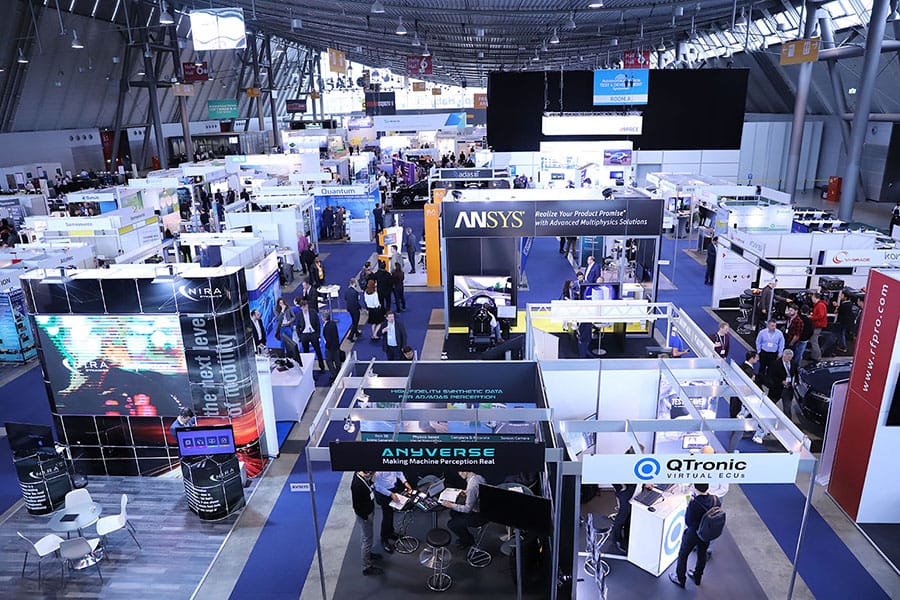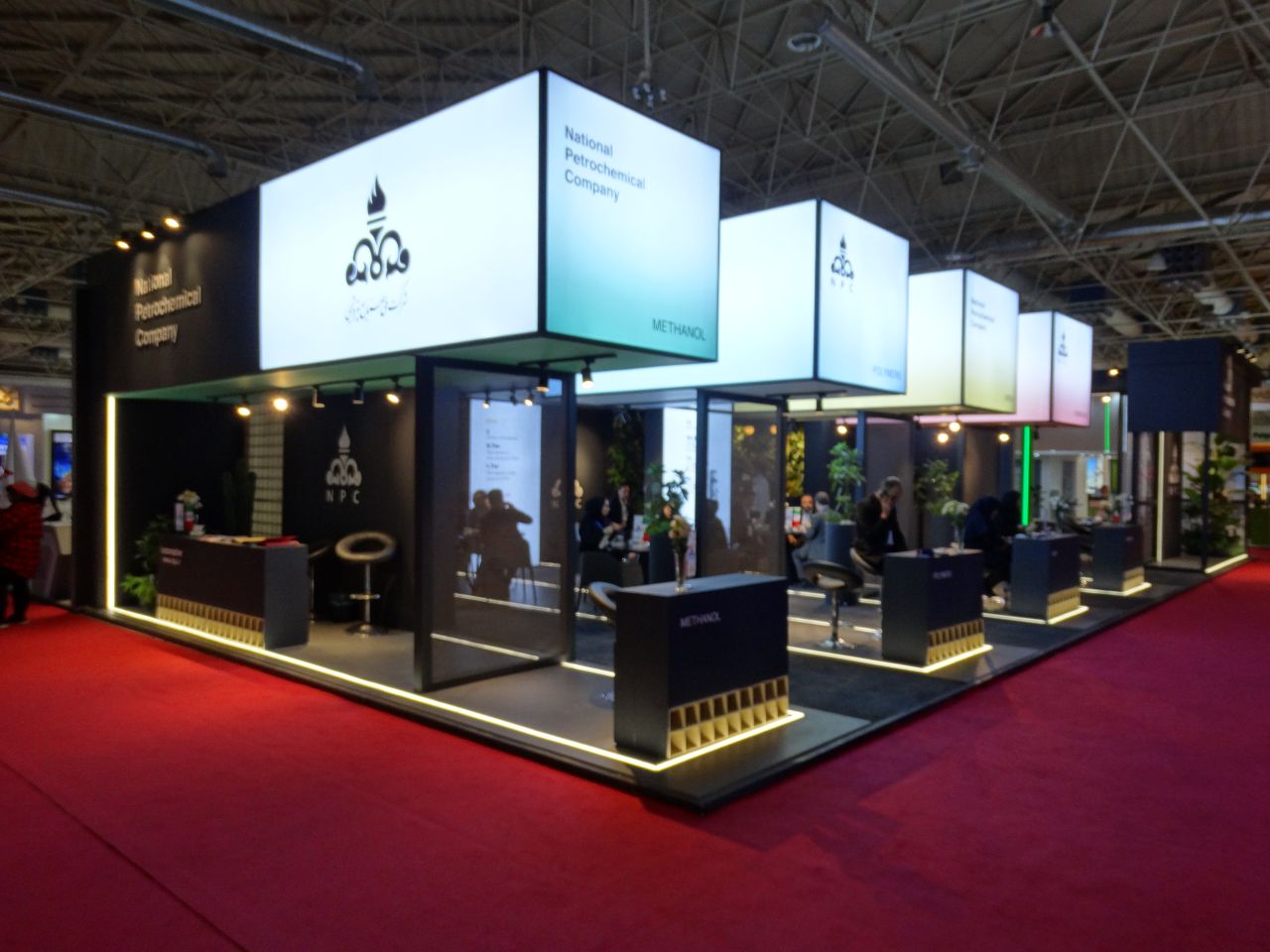Tehran International Exhibition: The driving force behind the national economy and a showcase for the flourishing of Iranian industries under sanctions

فهرست مطالب
- 1 Introduction: Tehran; the commercial crossroads of the Middle East
- 2 The historical and economic role of the Tehran International Exhibition
- 3 Overview of the importance of international exhibitions for Iran
- 4 Tehran International Fair as a Leading Host: A Case Study of a Hypothetical “Talent Search” Event
- 5 The Booth Industry in Iran: From Challenge to Opportunity
- 6 The place of photographs and visual media in reporting on the exhibition
- 7 Geopolitical Challenges; The Impact of the Trigger Mechanism and the Return of Sanctions on Tehran’s International Exhibitions
- 8 Conclusion: Horizons Ahead; Tehran International Exhibition on the Path to Globalization
Introduction: Tehran; the commercial crossroads of the Middle East
Booth Construction and Decoration System – Seyyed Mehdi Najafi – At the heart of Iran’s dynamic and high-capacity economy, the Tehran International Exhibition stands as a symbol of Iran’s industry and trade connection with the world. This complex is not only a temporary pavilion, but also a “commercial-cultural city” that has a long history of hosting the region’s largest industrial, economic and cultural events. International exhibitions are a powerful driver for economic development, introducing new products, creating distribution networks and, in general, the beating heart of B2B marketing .
The historical and economic role of the Tehran International Exhibition
The establishment of the Tehran International Exhibition was a turning point in the history of the Iranian economy. With an area of over 850,000 square meters on 50 hectares of land , 40 indoor exhibition halls and several outdoor halls , this complex is capable of hosting several specialized exhibitions simultaneously.
Holding major exhibitions such as:
International Exhibition of Oil, Gas, Refining and Petrochemical Industry
Tehran International Automobile Exhibition
Elcamp International Exhibition
The International Home and Kitchen Appliances Exhibition
has generated multi-billion dollar turnover, concluded international contracts, and created numerous direct and indirect job opportunities.
The 29th Iran International Oil and Gas Exhibition Begins – Countdown for Energy Pioneers
Overview of the importance of international exhibitions for Iran
Creating a platform for economic diplomacy and lifting sanctions
International exhibitions in Tehran act as a bridge to overcome political obstacles. The presence of foreign companies from friendly countries and even competitors under one roof provides a unique opportunity for economic dialogue, consultation and building mutual trust. These events create an apolitical and purely commercial atmosphere that can be a prelude to larger agreements.
Introducing domestic capabilities and reducing dependence on oil
One of the key functions of the Tehran International Exhibition is to introduce high-quality and competitive Iranian products to global markets. Many domestic industries, such as food, agriculture, handmade carpets, handicrafts, and information technology, have been able to find foreign customers for the first time at such exhibitions and have a share in Iran’s non-oil exports.
Transferring technology and knowledge to the world
The presence of major global brands at Tehran exhibitions opens a window on the world’s latest technological achievements . Iranian engineers, specialists, and businesses can become closely acquainted with innovations, update their technical knowledge, and provide opportunities for joint cooperation and technology transfer.
Development of the tourism industry and business tourism
Each international exhibition attracts thousands of foreign and domestic visitors to the capital. These guests stay in hotels, dine in restaurants, and visit the city’s tourist attractions, leading to a significant boom in related industries.
Tehran International Fair as a Leading Host: A Case Study of a Hypothetical “Talent Search” Event
Let’s assume that Tehran International Fair plans to participate in a national event to attract and guide young talents (like Ru’ya).
Booth design and content strategy
The Tehran International Exhibition pavilion should be a symbol of greatness, progress, and nationality. Using the colors of the Iranian flag along with a modern and minimal design can be very effective.
Reception area: Hosts in uniform and with a professional demeanor.
Interview Zone: Private booths for face-to-face interviews with recruiters.
Multimedia area: Large screens (LED Walls) that display live statistics and exhibition successes (number of events, trade volume, economic impact).
Virtual Reality (VR) Area: Visitors will be able to take a virtual tour of the exhibition grounds and halls.

The role of technology in modern exhibition design and exhibition booth construction
Using new technologies
Dedicated app: Visitors can scan the QR Code to receive information about all job openings and training programs at the exhibition.
Smart Resume Station: Individuals can upload their resume and have it intelligently matched to available job positions.
Interactive panels: Touch screens that provide information about history, future projects, and a map of the exhibition.
Integrated exhibition services
This is where the expertise of exhibition stand and service companies comes in. Providing integrated services including:
Booth design and construction (Custom & Modular)
Event Marketing and Advertising
Logistics and domestic and international transportation
Hostess Services
The provision of electricity, internet, and technical connections
for the Tehran International Exhibition can serve as a model, using the best domestic exhibition service companies to showcase the quality of this industry.
The Booth Industry in Iran: From Challenge to Opportunity
Iran’s exhibition stand industry has made significant progress in recent years.
Techniques: Moving from traditional, heavy wooden booths to lightweight, portable, and reusable modular booths that are both cost-effective and environmentally friendly.
Materials: The intelligent use of native materials such as wood, traditional arts (carving, mosaic), carpets, etc., along with the most modern materials such as aluminum composites, plexiglass, and graphic vinyls, can give a unique identity to Iranian booths.
Lighting : Professional lighting (Lighting Design) is one of the pillars of a booth’s success. Using RGB lighting is essential to create a dynamic and attractive atmosphere.
The place of photographs and visual media in reporting on the exhibition
In the digital age, being seen equals being there. So professional photography and creating engaging visual content from your booth is crucial.
Wide-shot photos: To show the grandeur and overall design of the booth.
Photos of details: design elements, branding, and human interactions.
Portrait photos: of professionals and booth staff providing services.
Short clips and Reels: For publishing on social networks like Instagram and LinkedIn.
Geopolitical Challenges; The Impact of the Trigger Mechanism and the Return of Sanctions on Tehran’s International Exhibitions
Along with all the opportunities that international exhibitions create for Iran, the challenges arising from the geopolitical environment cannot be ignored. The Snapback Mechanism, as one of the conditions of the JCPOA agreement, allows the parties to automatically return all UN Security Council sanctions in the event of a significant violation of the agreement. The activation of this mechanism and the return of sanctions (Sanctions Snapback) will have profound direct and indirect effects on the prosperity of the Tehran International Exhibition.
The first and most tangible impact is on the strong presence of international companies. With the return of sanctions, multinational companies and even many European companies that wish to be present in the Iranian market face legal obstacles and legal risks. This can lead to a reduction in the quantity and quality of foreign exhibitors , a decrease in the size of specialized exhibitions and, ultimately, a decrease in the attractiveness of the event for domestic and foreign visitors. Restrictions on international financial transfers make payments very complicated and costly for foreign exhibitors, often forcing them to cancel their participation.
However, this challenge can be transformed into an opportunity to strengthen the resistance economy and “inward-looking” exhibitions. In such circumstances, the main burden falls on domestic producers and industrialists to showcase their capabilities more powerfully. The Tehran International Exhibition can change its role towards strengthening the domestic supply chain, introducing import-substituting goods, and creating cooperation networks between Iranian enterprises . Although this may be accompanied by a decrease in foreign exchange earnings in the short term, in the long term it can lead to greater self-reliance of the country’s industries.
In addition, exhibitions serve as a platform for public diplomacy and breaking the isolation caused by sanctions. Even the limited presence of companies and businessmen from neighboring and allied countries sends a message to the world that Iran’s economy is alive, dynamic, and eager to cooperate despite all the pressures. Therefore, during the sanctions era, the quality of the event, innovation in exhibition construction, and the provision of professional exhibition services become doubly important to convey the message of Iran’s resilience and professionalism to the world. In this context, the role of Iranian exhibition construction companies is crucial in creating creative and world-class works with minimal dependence on imported raw materials and technologies.
As a result, although the trigger mechanism and the return of sanctions pose a serious threat to the further internationalization of Tehran exhibitions, these events will always remain due to their rooted position in the Iranian economy. The difference will be that their strategy will change from attracting maximum foreign investment to consolidating domestic foundations, regionalizing cooperation, and proving Iran’s capabilities in the most difficult conditions .
Conclusion: Horizons Ahead; Tehran International Exhibition on the Path to Globalization
Tehran International Exhibition is not just a physical venue; it is a dynamic economic entity and a national symbol. The future of this exhibition depends on further investment in digital technologies, infrastructure development and improving the quality of exhibition services . Close cooperation with creative and expert exhibition companies can make the experience of attending Tehran exhibitions a memorable and highly productive one for all exhibitors and visitors. Tehran International Exhibition is ready to shine even more as the center of Iranian trade and the exhibition hub of the Middle East.



